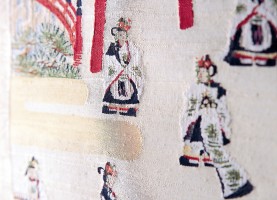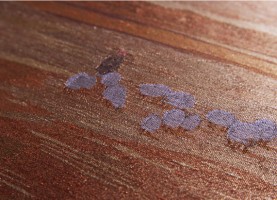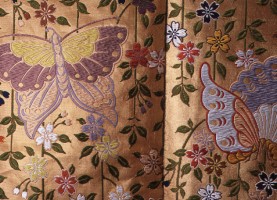

5~6世紀頃大陸から帰化した秦氏が伝えた織物技術は、平安建都(794年)とともに官営の機織産業として繁栄しました。西陣織の名称は、応仁の乱(1467~77年)後、戦乱を逃れていた織技術者たちが西軍本陣の跡付近で仕事を再開したことにちなんだものです。
西陣織は極めて多種多様で、綴(つづれ)、錦、緞子(どんす)、お召、絣、絽、天鵞絨(ビロード)等があり、多色を使用し絢爛豪華な糸使い模様の精緻さが特徴です。伝統を生かしながら常に新しい技術の開発を行っており、現在では、西陣で織れないものはないといわれるほど多様な織物を生み出しています。
The textile technology which the Hata family naturalized from the continent around the 5?6th century conveyed prospered as government-managed machine weaving industry with (794 years).
and others in whom the name of the Nishijin brocade had escaped war after the Onin War (1467?77 years) -- the west army -- it is connected with having resumed work near the marks of headquarters.
A Nishijin brocade is very various, there are (spell), Nishiki, splashed pattern, silk gauze, velvet (velvet), etc., and the minuteness of a gorgeous gorgeous thread usage pattern is the feature using multiple color.
Always new technology is developed, employing tradition efficiently, and such various textiles are produced that it is said that there is nothing that cannot be woven by the members of the west now.
西陣が誇る、緻密な織りの技
「すくい織り」をインテリアとして楽しむ
Close-weaving techniques which are the pride of Nishijin; enjoy “scooped-weave” as a fabric ideal for interiors.
手つむぎの糸に本金箔を貼り付けた
豪華な「ねん金」による織りの芸術
Handspun thread coated with real gold leaf by our artisans results
in the gorgeous Nenkin thread.
西陣織の最高峰「唐織」
舞台で使用される本物の能装束
The pinnacle of Nishijin weaving, “Karaori”. Identical to the costumes used on stage during performances of Japanese“Noh”plays.





